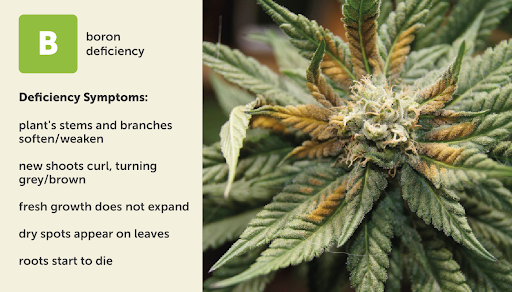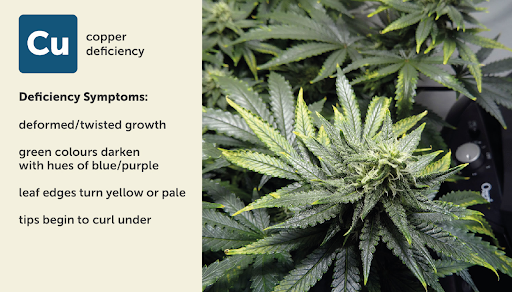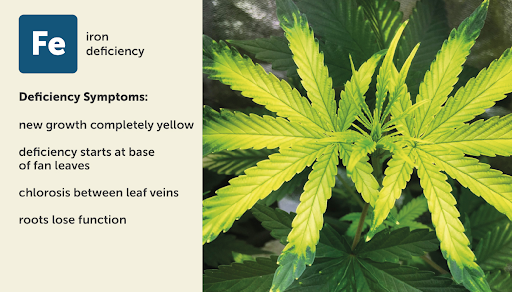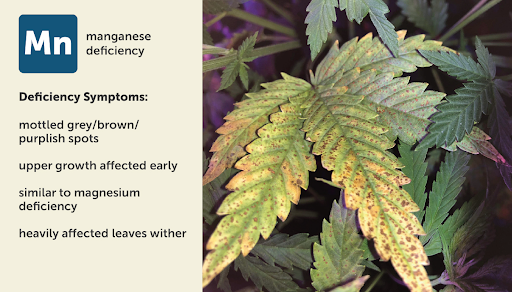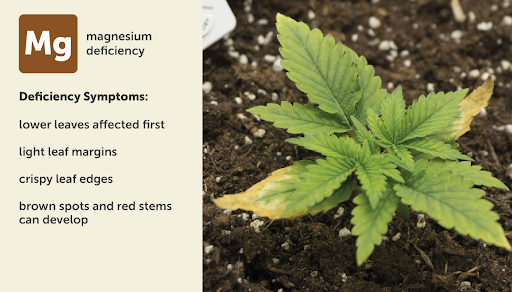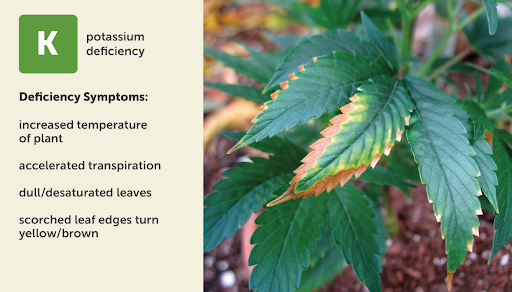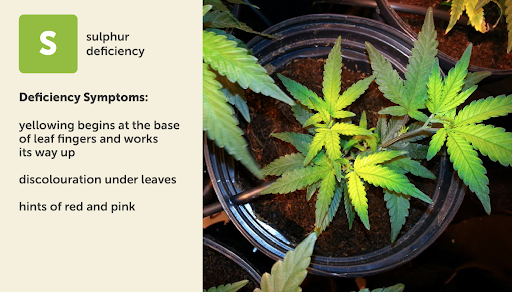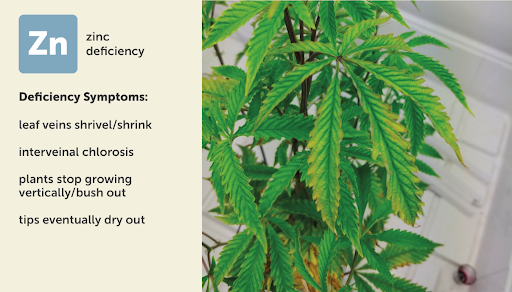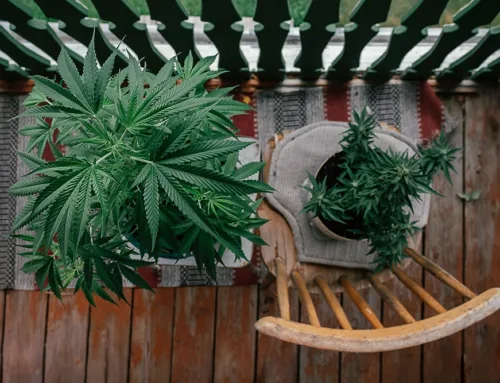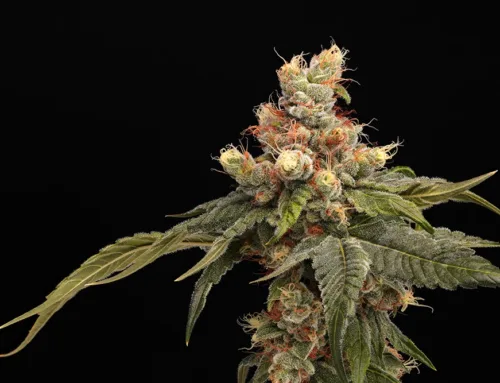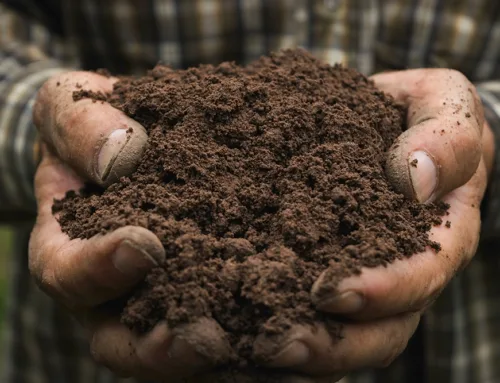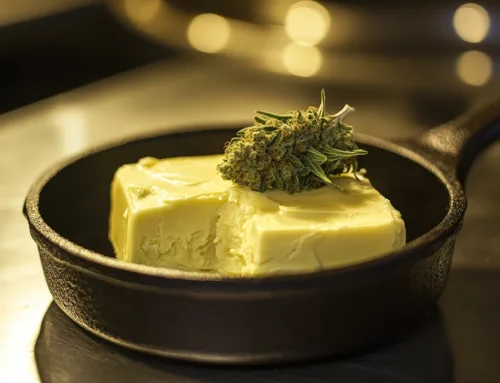Most Common Cannabis Deficiencies
Most Common Cannabis Deficiencies
Cannabis deficiencies refer to a variety of conditions where the plant lacks essential nutrients needed for healthy growth and development. This can lead to discolored or yellow leaves, stunted growth, or distorted leaves.
Cannabis cultivation requires understanding the signs and causes of deficiencies, cultivators can take proactive measures to provide the necessary environment to ensure thriving plants.
What Causes Cannabis Deficiencies?
Nutrient lock-out due to an imbalance in pH or ratio of nutrients is most often the cause of cannabis deficiencies. This includes cannabis flowering deficiency and cannabis leaf deficiencies.
By maintaining optimal pH levels, providing a well-balanced nutrient regimen, and understanding the mobility of nutrients, cultivators can effectively prevent and address cannabis deficiencies.
The Proper pH Level for Cannabis
Maintaining the proper pH level is crucial for nutrient uptake. When the pH is imbalanced, several deficiencies can occur that you can find on many plant deficiency charts.
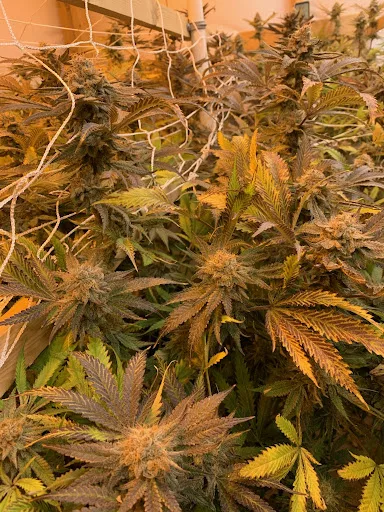
Most cultivators aim for a pH range between 6 and 7. This range allows for adequate nutrient availability and absorption, minimizing the risk of deficiencies caused by pH imbalances.
Macro vs micronutrients
Macronutrients including nitrogen, phosphorus, and potassium are required in greater quantities by marijuana plants. On the other hand, micronutrients, including iron, zinc, and manganese, are needed in smaller amounts but are equally important.
An excess of one nutrient can lead to deficiencies of others, known as a nutrient lockout.
Maintaining a proper balance of primary and secondary nutrients is crucial to prevent toxicity-induced deficiencies and ensure optimal cannabis plant health.
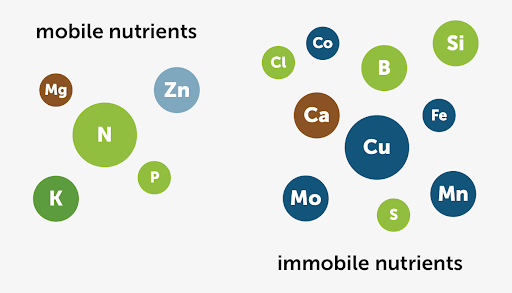
Mobile vs immobile nutrients
Plant nutrients can be classified as either mobile or immobile within the plant. Mobile nutrients, such as nitrogen (N) and potassium (K), can be translocated from older to younger plant tissues. This means that when these nutrients are deficient, symptoms typically appear in older leaves as they are prepared to support new growth.
Conversely, immobile nutrients like calcium (Ca) and iron (Fe) cannot be easily distributed within the plant. Consequently, deficiencies of immobile nutrients usually manifest in the new growth and younger leaves.
How to prevent and fix common cannabis deficiencies
Growers can prevent weed deficiencies by providing their plants with a well-balanced ratio of nutrients, watering effectively, and maintaining a balanced pH. Many deficiencies can be fixed by correctly diagnosing and making small changes to their gardens.
Refer to a weed deficiency chart or other plant nutrients deficiency chart to determine what weed deficiency you have.
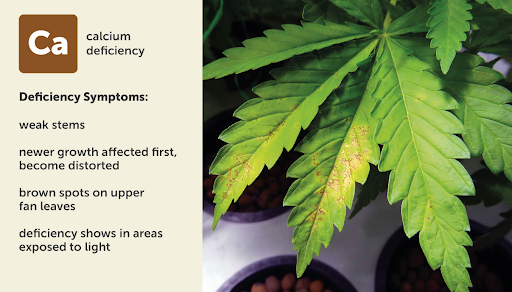
Calcium (Ca) deficiency
Signs of Calcium (Ca) deficiency include distorted leaf development, necrotic spots on leaves, and weak stems. The leaf diagnosis chart shows tiny brown spots. To address calcium deficiency, it is important to ensure an adequate supply of calcium in the growing medium.
This can be achieved by adding calcium-rich amendments such as gypsum or oyster shell flour into the soil. Maintaining a balanced pH level between 6 and 7 is crucial, as acidic soil can inhibit calcium absorption.
Boron (B) deficiency
A Boron deficiency is relatively rare, it is a micronutrient and is required in very little amounts in plants.
Symptoms of boron deficiency include stunted growth, distorted or brittle new growth, and yellowing or necrosis in between the veins, known as interveinal necrosis. Bud development can be impaired resulting in reduced yields.
Boron deficiency can be caused by too much calcium, too much water, high humidity, and too high pH levels in your soil. Before adding more Boron, rule out these possible causes.
Copper (Cu) deficiency
This element is also a micronutrient and is required in small amounts, but it is essential for several important processes within your plant.
Copper deficiency symptoms include fewer branches, and interveinal chlorosis, and may even result in leaves with dark blue or purple spots or brown or yellow leaf tips and edges. New foliage may be smaller and curl in.
Deficiency is often caused by imbalanced pH or lockout from excessive Phosphorus, Zinc, or Iron. Maintaining balanced nutrients and pH is the best way to prevent Copper deficiency.
Iron (Fe) deficiency
Iron deficiency in cannabis leads to yellowing of younger leaves while veins remain green this begins near the base of the leaf. You may notice slower growth, burnt tips, pale green leaf color, and thin bud development.
Causes of Iron deficiency include high pH levels, excessive watering, and excessive phosphorus. Treatments include effective watering, balanced pH, and nutrients.
Manganese (Mn) deficiency
Manganese deficiency in cannabis plants can result in the yellowing of leaves, with distinct green veins remaining intact and accompanied by dark brown spots. This condition often occurs in soils with high pH levels. It can lead to stunted growth and reduced yields.
Excessive levels of Calcium, Magnesium, Iron, Phosphorus, Zinc, or Copper can lead to a Manganese lockout resulting in an apparent deficiency. Treatments include ensuring optimal soil pH and providing balanced nutrients.
Magnesium (Mg) deficiency
Magnesium deficiency can be first seen in older leaves due to its mobility. You may notice the bottom leaves beginning to turn yellow accompanied by brown spots.
Excessive levels of Calcium, Potassium, and Aluminum can lead to Magnesium deficiency, as well as too low of a pH. To correct this deficiency, maintain a balanced pH and proper ratio of nutrients.
Molybdenum (Mb) deficiency
Molybdenum deficiency symptoms include chlorosis of middle leaves accompanied by orange, red, or pink color around the leaf tips and edges.
This nutrient tends to get locked out when the pH drops too low or there is too much Sulfur in the soil. Provide balanced nutrients and pH to correct this deficiency.
Phosphorus (P) deficiency
If you begin to see your lower leaves turn blueish or have brown blotches accompanied by purple stems and slow growth you may have phosphorus deficiency.
Phosphorus can become bound to soil particles, making it difficult if not impossible for plants to access. You can improve P uptake by using P-solubilizing bacteria like Bacilus megaterium and enzymes like phosphatases through compost.
Lock-out can be caused by excessive watering, low temperatures, and imbalanced pH so make sure you maintain a balanced environment.
Potassium (K) deficiency
Potassium (K) deficiency can result in various symptoms such as yellowing and necrosis of leaf margins, curling or wilting of leaves, and overall stunted growth. Any cannabis deficiencies chart should have potassium near the top.
A cannabis potassium deficiency can occur when soil potassium levels are low, high pH levels, or excessive levels of other nutrients such as calcium or magnesium. These factors can contribute to potassium lockout, making it less available for uptake by the plant.
Treatments involve applying potassium-rich amendments like kelp meal to the soil and maintaining proper nutrient and pH levels.
Nitrogen (N) deficiency
A nitrogen deficiency is associated with overall chlorosis of the lower and older leaves, stunted growth, and reduced vigor. It’s at the top of your basic nutrients deficiency chart.
Nitrogen is highly mobile and can wash out of the soil but using slow-release N like neem meal will help prevent this from happening. Excessive levels of Calcium, extreme imbalances in pH, and lack of oxygen due to excessive watering or compaction can reduce N availability.
Silicon (Si) deficiency
Symptoms of Phosphorus (P) deficiency may include weak stems, increased pest infestations, reduced tolerance to heat and drought, and decreased overall plant vigor.
Silicon deficiency is very rare especially if plants are planted in the ground but can occur with extremely high pH.
Consider a weekly foliar of mono-silicic acid.
Sulfur (S) deficiency
This deficiency is associated with yellowing leaves in new growth and can result in less flavor and fewer terpenes.
Excessive watering, high pH, and lack of sulfur in the soil can cause sulfur deficiencies in cannabis plants.
By applying a weekly foliar of Sulfur throughout the vegetative cycle and adding elemental sulfur into your soil you can avoid deficiency.
Zinc (Zn) deficiency
Although incredibly rare, a zinc deficiency can be identified by new growth patterns changing such as internodal spacing shortening, shoots appearing to not open, and wrinkling.
Causes can be attributed to excessive Phosphorus or imbalanced pH.



